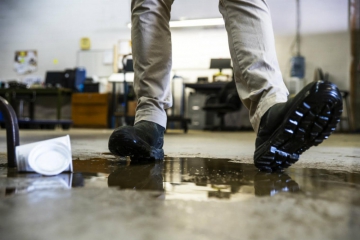Spring is here, and besides unpredictable weather and shifting clocks, it brings an opportunity to freshen up your Environment, Health, and Safety (EHS) program.
Spring is the season of new beginnings—making it the perfect time to assess your EHS program and be mindful of new environment, health, and safety concerns that this seasonal shift can bring.
To help you in your quest to revitalize EHS after winter dormancy, we’ve outlined some of the top concerns to rally around—from daylight savings to slips, trips, falls, and more—as well as tips and tricks for getting everyone at your company excited about EHS in this new season.
Better Safe Than Sorry
Spring can feel like a huge relief from winter with less snow and more sunshine. But spring is a tumultuous season, and workplaces need to be prepared for all sorts of weather and environmental events, including heavy rain, snow, high winds, flooding, and tornados. Being mindful of the changing weather conditions and encouraging your employees to research the weather before they head into the outdoors is a must.
It’s important to stress the adage of “better safe than sorry” and double-check that every employee is prepared for the changing weather. One great way to do this is to discuss the week’s forecast before it happens and let employees know they can take extra time to ensure their own safety while driving or doing other outdoor activities, as well as emphasizing the importance of having the right outerwear, gloves, footwear, and Personal Protective Equipment (PPE) for the job.
Read Personal Protective Equipment: A Primer to stay current on all things PPE.
April Showers Bring May Flowers—and Slips, Trips, and Falls
While slips, trips, and falls are often seen as a winter issue due to snow and ice, they also happen in spring because of unpredictable weather patterns and continuing snow in some regions. These accidents are incredibly common and dangerous—but most are preventable. To minimize these risks in spring, follow some of our quick tips below:
- Always check the weather forecast before heading outside and never work in inclement weather
- Wear slip-resistant footwear
- When possible, avoid slippery surfaces or areas with wet debris (frozen leaves, ice patches, etc.)
- Use any available handrails
- Stop work if an area is too slippery or icy
- Do the penguin shuffle
- Declutter your workspace
Read (and watch) 7 Memorable Slip, Trip, & Fall Videos to Inspire a Culture of Safety - Director's Cut for hilarious and cringe-worthy health and safety inspiration.
Times Are a Changin’
Daylight savings time began on March 12 at 2:00 AM (Eastern Standard Time), extending our evenings an hour longer. While it might not feel like a big shift, OSHA has documented that in the days just after the time change, workplace injuries increase. As creatures of habit, we are used to sleeping, eating, exercising, and working at the same time each day. This means that when the time change happens, our circadian rhythms can get out of balance, making us more tired and less attentive at work.
To combat the changes that come with daylight savings in your workplace, educate your employees on how to watch out for its effects on sleeping, eating, and other daily activities. Let them know that it can take up to one full week to adjust to the new time and that if they have felt impacted by the shift in years past, they may want to move their schedules later into the day in the week leading up to daylight savings time to adjust their habits gradually.
Fresh Perspective
EHS managers—you might feel that your momentum has slowed or come to a halt after winter. Spring can be a perfect blank slate, a time to refresh interest in your EHS program and get everyone reengaged through fun activities, renewed communications, and other tactics. While we understand not everyone has the budget to rejuvenate EHS the way they wish they could (beach-front parties, anyone?), we do have a few thrifty tips for bringing EHS front and center.
First, start by reconnecting with your marketing team—they have the expertise to help you start (or restart) new internal campaigns around EHS, sponsor an upcoming meeting, and get your message heard. Another great way to bring EHS to the forefront is by holding on-site activities that involve education and interactivity. Anything from an EHS fair supported by internal departments to a full-blown EHS Awareness Day can boost morale, especially if you provide snacks for your attendees.
Hello, Spring
Spring brings showers, slips, trips, and falls, and many opportunities to drive EHS renewal at your organization. We hope our highlights of spring hazards and EHS program refresh tips give you plenty of inspiration to keep making your workplace great this spring and beyond.
Need help improving your EHS culture? Learn more about our health and safety consulting services.
Want more news and insights like this?
Sign up for our monthly e-newsletter, The New Leaf. Our goal is to keep you updated, educated and even a bit entertained as it relates to all things EHS and sustainability.
Get e-NewsletterHave any questions?
Contact us to discuss your environment, health, safety and sustainability needs today.








